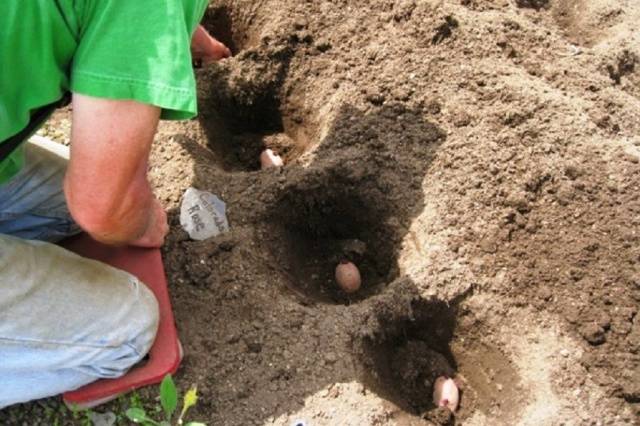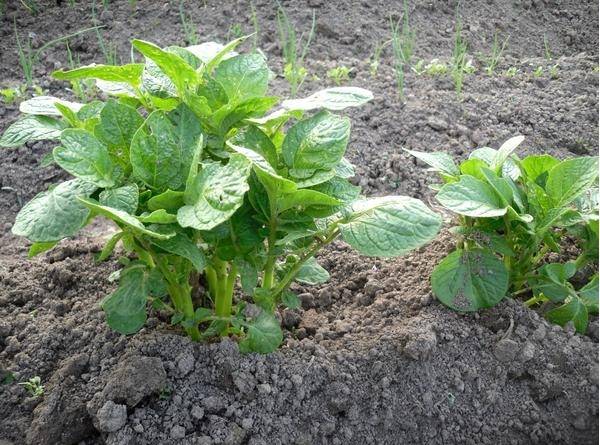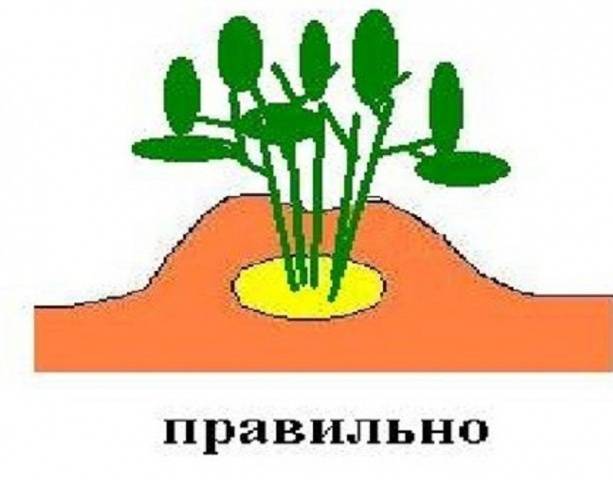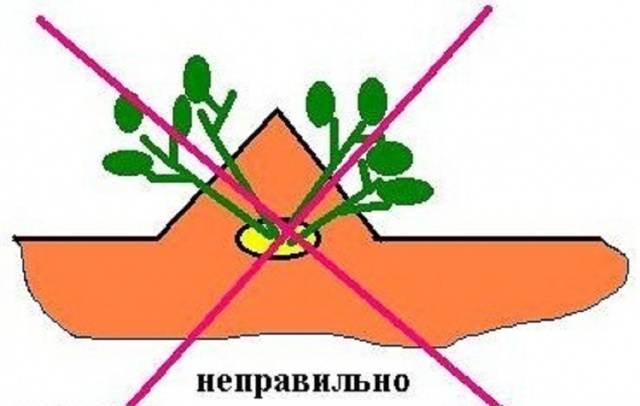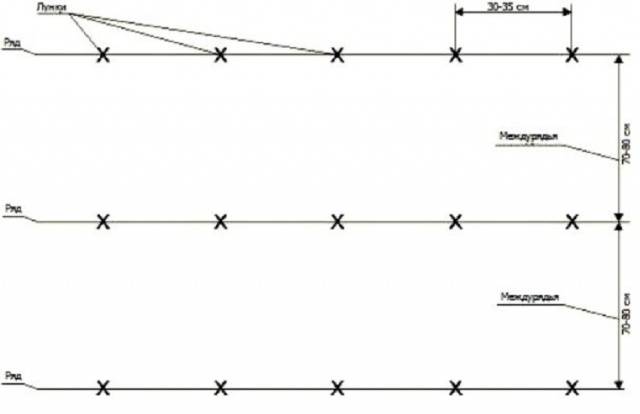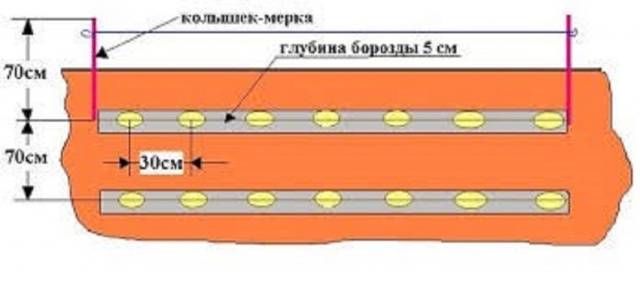Content
Potatoes are a permanent representative of the crops that summer residents add to the list of annual plantings. One of the issues of concern to potato growers is the depth of planting of potatoes.
After all, this parameter is very important. Many gardeners consider it to be a good protection of tubers from frost. But, how does the depth affect the germination and yield of potatoes? Do I need to take into account the composition of the soil? How to plant potatoes correctly, taking into account all the nuances? Do the varietal characteristics depend on the planting depth of tubers? All these questions are very important, especially for beginner potato growers.
In our article, we will try to cover the above topics.
What is important to consider when planting potatoes
Of course, the composition of the soil and the region in which the crop is grown. Potatoes are planted from the end of March to May, depending on climatic conditions. The further south the area is, the earlier the planting begins. In the northern regions, work should begin in May.
Planting depth of tubers
The planting depth of potatoes is an important factor on which many plant growth indicators depend:
- whether there will be enough moisture;
- whether there is enough heat for development;
- whether it will be possible to provide aeration of the soil.
Planting depth is determined depending on the type of soil and the size of the seed. Small tubers should not be embedded deeply.
Separate deep, medium and shallow planting depths of potatoes.
- Deep. This is considered a planting in which the tubers are placed in the ground 10 cm or more. As a result, the plants develop well, but the harvest will be more difficult. Therefore, it is well suited for sandy loam soils and arid areas. Also used for growing technologies without hilling bushes.
- Average. With this type of planting, the tubers are buried 5-10 cm.It is good to maintain this parameter on loam and heavy soils.
- Small. Planting parameters - from 5 to 7 cm. Recommended for clayey soils and small seed material.
There is another interesting planting technology in which the tubers are placed on top of the loosened soil and covered with mulch on top. The best options are for shelter:
- rotted sawdust with sand;
- a mixture of humus and straw;
- compost;
- peat.
To improve the nutrition of potatoes, mineral components (fertilizers) are added to the mulch. This method is especially good for use on clay soils. To protect the tubers from greening, add the mulch again at a plant height of about 25 cm.
When choosing the depth to which the potatoes will be planted, one should take into account and ground warming temperature... In early spring, when it is not yet warmed up enough, planting is done to a depth of no more than 5-6 cm.With strict adherence to the planting dates, the tubers are buried 6-8 cm into the ground. And if you have slightly shifted the period to a later time, then the ground is already warm and dry enough, well ventilated, so a depth of 10 cm will be the most suitable. On sandy soils, this indicator can be safely increased to 12 cm.
Based on the foregoing, it is possible to determine the run-up in terms of the potato planting depth from 5 cm to 12 cm. The main thing is, do not forget to maintain the same depth of tubers throughout the entire area allocated for potatoes.
The ratio of tubers size and planting depth can also be determined:
- Non-standard and small ones have a small margin of strength, therefore they are planted at a depth of at least 6 cm and no more than 12 cm.When planting potatoes in the ridges, the minimum depth is 8-9 cm.
- Large potatoes have an adequate supply of nutrients. Therefore, they develop faster and are able to easily overcome a planting depth of 10 to 12 cm. For Dutch varieties, a planting depth of 20 cm in ridges is permissible, but local varieties are not ready for such a load.
- In the case of planting potatoes in parts, be sure to make sure that there are sprouts on each segment. This technology requires only a shallow depth to prevent rotting of the planting material.
How to plant seed correctly
What does right mean? This concept includes not only the time and depth, but also the scheme of planting potatoes. There are several types that potato growers use successfully. In this case, the planting density is maintained depending on the composition of the soil.
- Potatoes of early varieties are planted denser and on fertile soils. This option works well for small or chopped potatoes.
- Poor and poor soils require more rare planting of potatoes. This scheme is also used for large tubers.
It is very important what distance between the rows when planting potatoes will be maintained.
Basic landing options
On the crest
A common method for a long time. Layout of tubers 70x30. With this method, they dig up a selected part of the site, outline even furrows with a cord and lay them with a depth of 5-10 cm. Humus (0.5 shovels) and wood ash (1 tbsp. Spoon) are introduced into the furrow. The dose is repeated every 30 cm of the furrow. Potatoes are laid on top and covered with earth. It is best to do this on both sides to create an M-shaped comb. The height of the comb is 9-10 cm, the width is about 22 cm.
This option requires a one-time hilling of potatoes during the growth process with simultaneous weeding weed... The final height of the ridge is 30 cm. It protects the potatoes from drying out during dry periods and from the accumulation of moisture during rains.
Technology advantages:
- early landing is possible;
- good heating of the ridge under the sun;
- the rapid pace of cultural development;
- the formation of powerful and healthy bushes;
- ease of harvesting;
- increase in yield by 20%.
Under the shovel
The most common and simple method for planting potatoes.
The depth of the furrows, which are made on the ground, is 5 cm. The arrangement of the rows is at least 70 cm from each other, and the distance between the tubers is 30 cm. But look at the number of shoots. The more there are, the longer the distance between the tubers must be maintained.
It will be optimal to plant potatoes when the temperature on the surface of the soil reaches 8 ° C, then you can be sure that at a depth of 30 cm it has already completely thawed. If you skip this period, then the moisture useful for the potatoes will go away, and the yield will noticeably decrease. It should be noted the disadvantage of this method - the dependence of the state of tubers on weather conditions. Even at such a shallow depth, waterlogging of potatoes is possible. This threatens with the death of roots at the beginning of the season and a decrease in the quality of storage after harvest. And during the growth period, plants are susceptible to fusarium (with warmth and humidity) and rhizoctonia (cool end of summer).
In the trenches
It is good to plant potatoes with this method in an arid region.
Trenches are prepared in the fall, digging them 25-30 cm deep and filling them with organic matter. Use a mixture:
- manure;
- compost;
- ash;
- wet hay.
A distance of 70 cm is maintained between the trenches. In the spring, the depth of the trench will be 5 cm after the humus settles. Potato tubers are placed in a trench at a distance of 30 cm from each other, sprinkled with soil. Potatoes do not require additional nutrition when planting in trenches. It was brought in in sufficient quantities in the fall. In addition, organic matter provides heating of tubers. Sprinkle a little earth over the trenches and add a layer of mulch to retain moisture. The thickness of the mulch layer is maintained no more than 6 cm.As the bushes grow, you can add it. The disadvantages of this method are:
- Waterlogging of potatoes during the period of heavy rainfall. To avoid this, in regions with high humidity, grooves are laid along the edge of the ridges to ensure water drainage. The depth of such grooves is from 10 to 15 cm.
- Labor intensity. Arranging a trench requires significant labor and a large amount of compost and mulch.
Organic in a container
For this method, it is necessary to create stationary container ridges. The building is about 30 cm high and 1 meter wide. The longitudinal position must be observed from north to south. The walls of the container are laid out from logs, bricks, slate, boards. Between the containers, passages from 50 to 90 cm withstand, which must be mulched (sand, sawdust). Fill the container with organic matter:
- bottom layer - plant residues;
- the next is manure or compost;
- upper - soil from the aisles.
The number of rows of potatoes in one container is no more than two. Tubers are planted in a checkerboard pattern with an interval of 30 cm.Advantages:
- Plants get enough light. Each row is located at the edge of the container. This leads to increased yields.
- Decorativeness of landings.
- The duration of the operation of the ridges. After collecting potatoes, the container is sown with green manure, and before winter, it is filled with organic matter.
- Preservation of nutritional components. They are protected from washing out by the container walls.
- Ergonomics and aesthetics. The maintenance of the ridges is simple and convenient. No hilling or digging required. Loosening is enough. Plants do not get sick and tubers after harvesting are very clean, well stored.
- Early landing possible.
Conclusion
Many gardeners choose to plant potatoes under non-woven materials, in barrels and other extraordinary methods. In any case, you need to adhere to the recommended planting depths depending on potato variety, soil composition and climatic conditions.
The harvest will definitely justify all the efforts expended.
